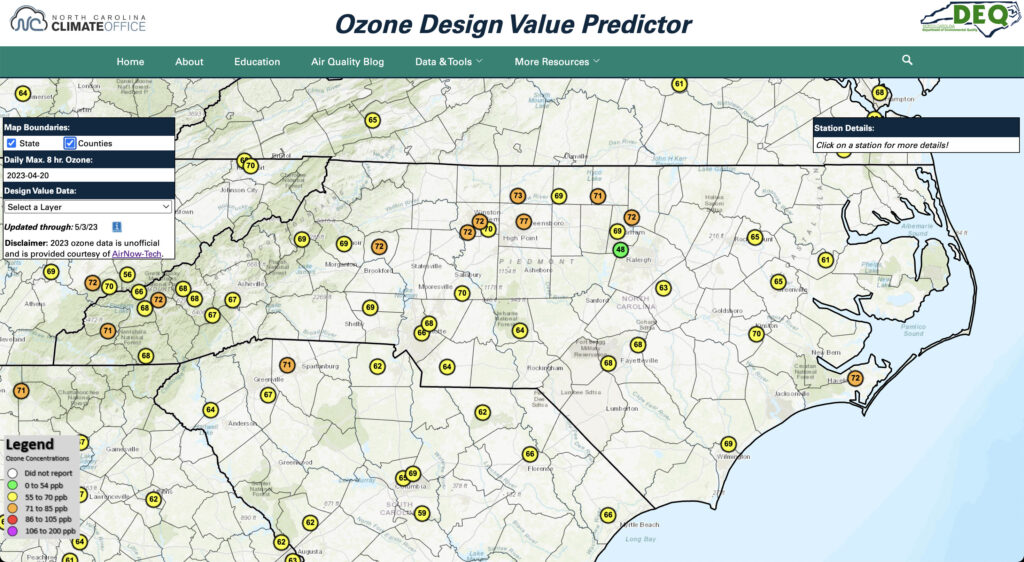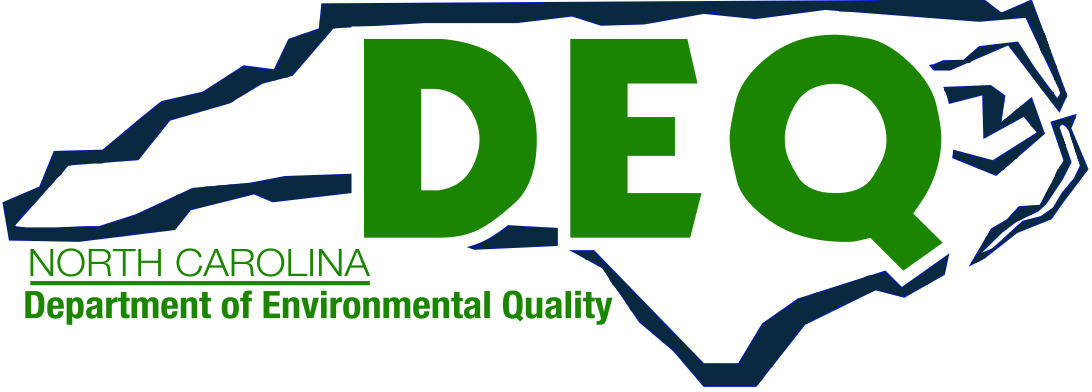We usually experience good air quality conditions throughout the spring in North Carolina, often due to those April showers that bring May flowers! However, it was smoke in the third week of this April that caused our air quality AQI to bloom from Green to Orange (and even Purple!) for a 5-day period. Read on to find out why we believe smoke from several small fires, and one large fire, were the culprits behind our short-lived, bad air quality episode.
A Work Week’s Worth of Code Orange
For five consecutive days, April 19th – 23rd, the air quality forecast was for Code Orange or worse conditions in at least one county across the Tarheel state. From Code Orange overnight ozone readings in the mountains, to Code Purple particle pollution concentrations along the coast, the middle of April experienced a barrage of smoke-induced air quality issues that kept NC DAQ forecasters on our toes!

Not only was the duration of Code Orange days unusual, but so were some of the locations that experienced them. On April 20th, monitors in both the Triad and the Triangle recorded a max. 8-hour ozone concentration in the Code Orange range. Based on our research, we believe that this was the first time since June 29th, 2012 that a monitor in both regions have recorded Code Orange ozone concentrations on the same day!
Smoke and Stagnation Spell Trouble
Limited dispersion results in air mass stagnation. This allows pollutants to gradually build over time and can lead to elevated ozone and particle pollution concentrations. During the third week of April this year, a large area of high pressure aloft stalled over the eastern U.S. and resulted in a gradual stagnation of the air mass, allowing for pollution, including smoke from numerous prescribed and agricultural burns, to aggregate across the southeastern U.S.

In recent years, we have noticed a correlation between elevated surface smoke concentrations and ozone formation. Our hypothesis that a uniform, stagnant layer of smoke enhances ozone formation across NC was supported by the uniformity of ozone levels across the state on April 20th, as urban and rural areas from the mountains to the coast reported upper Code Yellow to low Code Orange max. 8-hour ozone concentrations.

Great Lake Fire
On Friday, April 21st, the statewide layer of smoke we believed to be driving elevated ozone concentrations across the state started to clear, and we thought our air quality woes were behind us. However, around noon, we began to notice an initially small area of smoke south of New Bern. In a few hours, the smoke plume had expanded to cover numerous counties across eastern NC. It was apparent at this time that a major fire was burning.

This was a rapidly developing situation; visibility at the Craven County Regional Airport, which was almost 20 miles north of the fire, dropped to 3 miles. Additionally, we began to receive reports of ash falling from the sky in New Bern. It quickly became obvious that this was a hazardous situation near the fire, and the NC DAQ forecast team responded quickly to issue Code Purple air quality alerts to warn folks of the likely unhealthy air quality in the affected areas.
With the new tools we now have at our disposal, including the Air Quality Portal and county-level forecasting, we were able to swiftly get the message out about the expected impacts from the Great Lake Fire to all citizens of NC, which we strive to do on a daily basis!
 Air Quality Portal
Air Quality Portal
